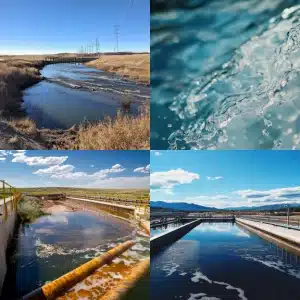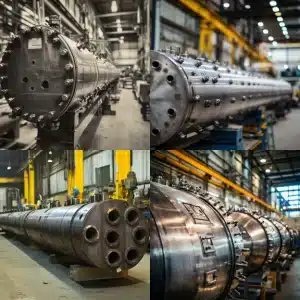
Common pressure vessel failures are often caused by corrosion, fatigue, overpressure, material flaws, and operational missteps. By understanding these risks and implementing regular inspections, ASME compliance, and quality fabrication methods like prefabrication, you can avoid catastrophic incidents and extend equipment life. This guide outlines practical strategies to keep your pressure vessels safe, efficient, and compliant.
Understanding What Are Common Pressure Vessel Failures
If you have ever wondered what are common pressure vessel failures, you are not alone. Pressurized systems are the backbone of many industries, from energy to water treatment. At the same time, you face significant safety challenges if a vessel fails. Even a small defect can grow into a catastrophic incident. Good news, though, understanding why these failures happen and how to prevent them is easier than it sounds. This guide walks you through the root causes, the consequences for your operations, and practical ways to keep your vessels in top shape.
Pressure Vessel Basics
A pressure vessel typically has three main parts:
- A shell (often cylindrical, spherical, or a combination)
- Heads (end caps)
- Reinforcement structures, such as stiffeners or nozzles
You will find these vessels in industries like oil and gas, chemical processing, and power generation. For instance, compressed air tanks, industrial boilers, and petrochemical reactors all qualify as pressure vessels. If one fails, the energy release is massive. This is why facilities that handle air, gas, or liquids under extreme pressure must focus intently on design, fabrication, and maintenance.
To minimize the chance of an accident, organizations often follow rigorous standards set by the American Society of Mechanical Engineers (ASME). For instance, ASME Certified Pressure Vessels are inspected, tested, and built with reliability in mind. Red River, an ASME-certified manufacturer, highlights the importance of adhering to these stringent codes to keep you safe (Red River).
Major Failure Mechanisms
When you dig into the details, you see a few recurring failure patterns:
- Excessive pressure or temperature: Overloading a vessel beyond its design specs can create micro-cracks. Over time, those cracks may widen and compromise the vessel’s integrity.
- Material fatigue: Metal components can weaken through repeated stress cycles. This process falls under fatigue failure analysis, which assesses how vibration and cyclic loading degrade metals.
- Corrosion: Chemical reactions can eat away at the internal or external walls, eventually causing leaks or full structural collapse. To learn more about identifying corrosion damage, take a look at corrosion failure analysis.
- Manufacturing flaws: Welding defects, inadequate testing, or improper heat treatments can leave you with weak joints and inconsistent material properties.
- Operational mishaps: Poor maintenance scheduling or ignoring recommended pressure levels can lead to unforeseen failure.
A single vessel may experience more than one mechanism at once. For example, a welded seam susceptible to corrosion might also experience fatigue stress. Recognizing these combined factors is critical to preventing a serious event.
Recognize the Main Failure Causes
Identifying the primary reasons for pressure vessel malfunctions helps you focus your inspection and maintenance efforts. When you know how these causes manifest, you can catch red flags early and plan corrective actions well in advance.
Material Issues
Using the correct material for your pressure vessel is crucial, as mismatched alloys can lead to stress corrosion cracking and micro-fractures. Material failure analysis and metallurgical testing help detect these weaknesses early. In harsh environments like oil and gas, corrosive substances can rapidly degrade internal linings, making material selection and protective coatings critical. Red River LLC ensures full material traceability to guarantee each component meets required specs before fabrication begins.
Operational Oversights
Even a well-designed pressure vessel can fail if operated improperly. Running equipment above rated limits or neglecting routine inspections increases the risk of cracks and wall thinning. Small oversights, like ignoring gasket maintenance or using the wrong cleaning chemicals can accelerate wear. Strict adherence to operational protocols and a consistent maintenance schedule is essential for long-term vessel integrity.
Prevent Major Vessel Failures
Keeping a pressure vessel safe for the long haul involves more than just building it to code. You have to remain vigilant throughout its service life, from the day it arrives on-site until it is decommissioned. A single overlooked crack could turn into an expensive and dangerous incident, bringing production to a halt.
Emphasize Compliance
ASME sets clear guidelines for designing, fabricating, and inspecting pressure vessels. Opting for an ASME-certified vessel
ensures you follow well-tested rules that drastically reduce risk. According to Red River, their certification with U4 & R stamps demonstrates that the pressure vessels they produce meet or exceed industry standards (Red River).
ASME compliance covers:
- Design calculations: Vessel thickness, diameter, shape, and support must be verified.
- Welding certification: Only qualified welders and procedures should be used.
- Inspection protocols: Hydrostatic or pneumatic tests check for leaks or weak points.
Routine Inspections and Advanced Analysis
Routine inspections whether annual or semiannual are essential for catching issues early. While visual checks help spot external damage, advanced methods like ultrasonic testing can detect internal thinning. When structural concerns arise, consulting experts in pressure vessel failure analysis, mechanical failure analysis, or structural failure analysis can uncover root causes. Many facilities also schedule deep-dive assessments periodically or when operating conditions shift.
Learn From Prefabrication
Prefabrication in controlled environments helps fabricators like Red River LLC maintain consistent quality and reduce on-site risks. This approach minimizes welding errors and cuts down on exposure hours, making large-scale projects safer and more efficient. Tools like Building Information Modeling (BIM) further enhance precision by allowing pre-shipment adjustments, reducing the likelihood of rework and minimizing safety hazards like misaligned components or overpressure risks.
Ongoing Upgrades
Pressure vessels do not remain static forever. Changing regulations, product formulations, or throughput demands can strain older vessels not designed for the new conditions. Regularly recalculating safe operating limits and upgrading components means you can extend the vessel’s lifespan by years. The cost of retrofitting with corrosion-resistant materials or adding advanced monitoring sensors often pays off in fewer shutdowns and safety incidents.
What Are Common Pressure Vessel Failures
Pressure vessel failures can range from small leaks to major accidents, often caused by design flaws, material issues, misuse, or corrosion. However, you can significantly reduce these risks by choosing ASME-certified vendors, maintaining regular inspections, and using quality prefabrication. Ongoing maintenance and a proactive safety culture, where anomalies are addressed early, are essential to keeping your operation safe, efficient, and profitable.
Take Control of Pressure Vessel Safety Before It’s Too Late
Ready to safeguard your operations and avoid costly downtime? Contact Red River LLCfor ASME-certified pressure vessels, expert fabrication, and proactive inspection strategies that keep your equipment running safely and efficiently. Don’t wait for failure, take control of your pressure vessel safety today.
Frequently asked questions
1.What causes pressure vessel failure?
Pressure vessel failure is typically caused by factors such as corrosion, material defects, poor welding, overpressure, fatigue, and inadequate maintenance. These issues weaken the vessel’s structural integrity, potentially leading to leaks, cracks, or catastrophic ruptures.
2. How to perform pressure vessel failure analysis?
Performing pressure vessel failure analysis involves collecting operational data, conducting visual inspections, performing non-destructive testing like ultrasonic or radiographic exams, and carrying out metallurgical lab tests. Engineers analyze this information to identify root causes and recommend improvements.
3. Are pressure vessels always at risk of leaks?
They carry pressurized fluids, so even the smallest flaw can turn into a leak over time. However, proper design, regular inspections, and good maintenance minimize this risk significantly.
4. How do I identify a cracked vessel?
Look for signs of discoloration, unusual vibrations, or drops in pressure. Ultrasonic testing or dye penetrant tests can also reveal cracks that are invisible to the naked eye.
5. Which standards ensure vessel safety?
ASME standards are considered the gold standard. Some regions also require National Board (NBBI) certification. Ensuring your vessel meets these codes helps keep it safe and compliant.
Key Takeaways
- Regular inspections and advanced diagnostic methods, such as ultrasonic testing, help you catch potential failures early.
- Material selection matters. Choosing the right alloy substantially lowers the risk of corrosion and stress fractures.
- Certified fabrication and compliance with ASME codes ensure each vessel meets rigorous safety standards.
- Prefabrication can minimize assembly errors and overall project risk.
- Comprehensive maintenance scheduling is your strongest defense against catastrophic failure.




